

Now playing:
Watch this:
Fitbit Charge, Charge HR and Surge do heart rate and…
2:02
Fitbit is the runaway leader in the fitness-tracker market, and yet the company has been completely quiet in 2014. Now, as leaks have hinted, it’s back at the end of the year with a trio of new products. They range in price from $130-$250 in the US, £100-£200 in the UK and $150-$300 in Australia.
Two of them — the Charge HR and Surge — have all-day heart-rate tracking, but, alas, they aren’t coming until early 2015.

Sarah Tew/CNET
For now, this fall, Fitbit’s only new product is the Charge. I got to see all three at CNET’s offices and try them on for size.
Fitbit Charge: Finally, a replacement for the Fitbit Force
Here’s the good news about the Fitbit Charge, the least expensive of the three bands: if you’ve been missing the Fitbit Force , an accelerometer-equipped band with OLED display that was pulled from store shelves due to an outbreak of allergic skin reactions, this is pretty much the same thing. It’ll also be available very soon, this November.
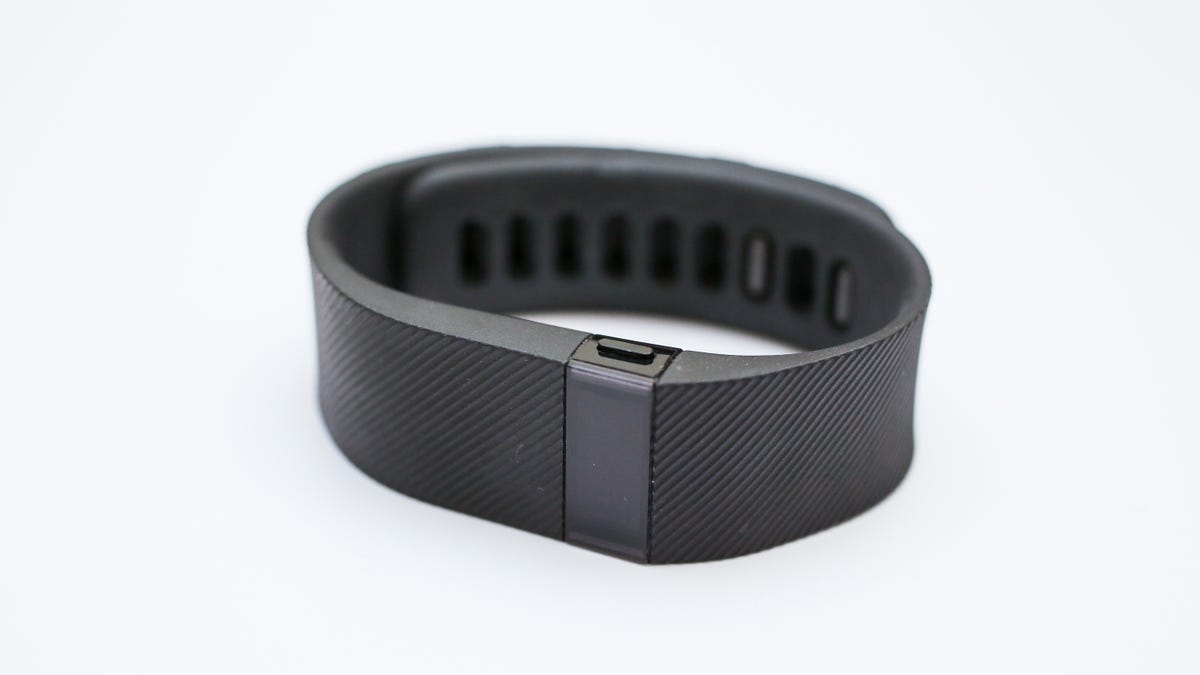

Sarah Tew/CNET
The Charge has the same horizontal OLED display and side button as before, but it’s slightly wider. And it has a redesigned band made with new materials, as well as fastening prongs that Fitbit claims won’t detach as easily (several of us at CNET lost our models last year when they flew off our wrists).
New Fitbit Charge HR and Surge add heart rate to the equation (pictures)






The Charge has new automatic sleep tracking, much like products such as the Misfit Shine already offer. And the Charge finally has caller ID that works when paired to iOS, Android or Windows phones — a promised feature that never arrived for the Fitbit Force. It lasts 7 days on a charge, which isn’t as great as other fitness bands like the Shine or the Jawbone Up24 .
At $130 in the US, £100 in the UK and $150 in Australia, however, the price seems a little high considering it’s just a glorified step counter: competing accelerometer-based bands have been lowering prices as of late.
Fitbit Charge HR: The heart-rate monitoring band you want to wait for
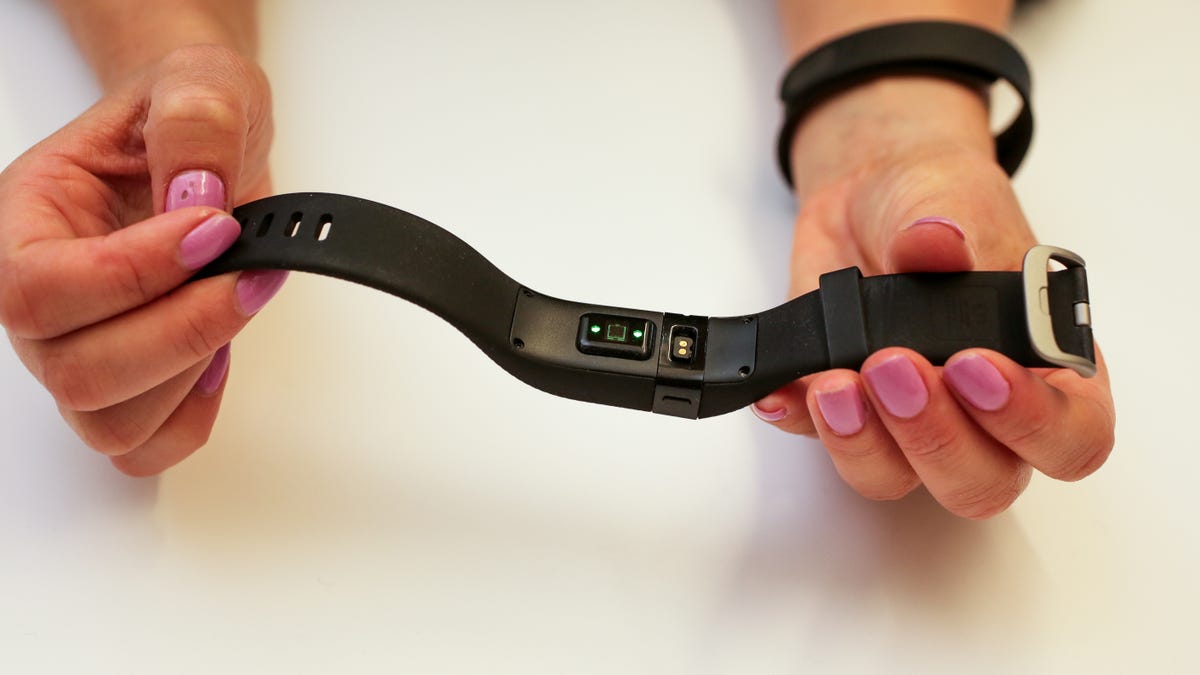

Sarah Tew/CNET
The Fitbit Charge HR is, basically, the Charge with the addition of an optical heart-rate monitor on the back. It looks nearly the same, except its band uses a standard watch-like buckle instead of little snap-on prongs, for a snugger fit. But, Fitbit promises 5 days of battery life while the Charge HR monitors heart rate continuously, even during sleep. Its continuous all-day tracking is something most heart rate-enabled fitness bands don’t do.
I’d suggest you skip the Charge and wait for the Charge HR instead: it costs just $20 more at $150 in the US, £120 in the UK, or $180 in Australia. Plus it feels nearly the same, but adds new 24-hour heart rate tracking technology that sounds worth waiting for. Called PurePulse, the band continually monitors heart rate whether you’re asleep or awake, and funnels the results into Fitbit’s app. Resting heart rate is calculated while sleeping, and used to help generate target heart-rate zones during workouts.
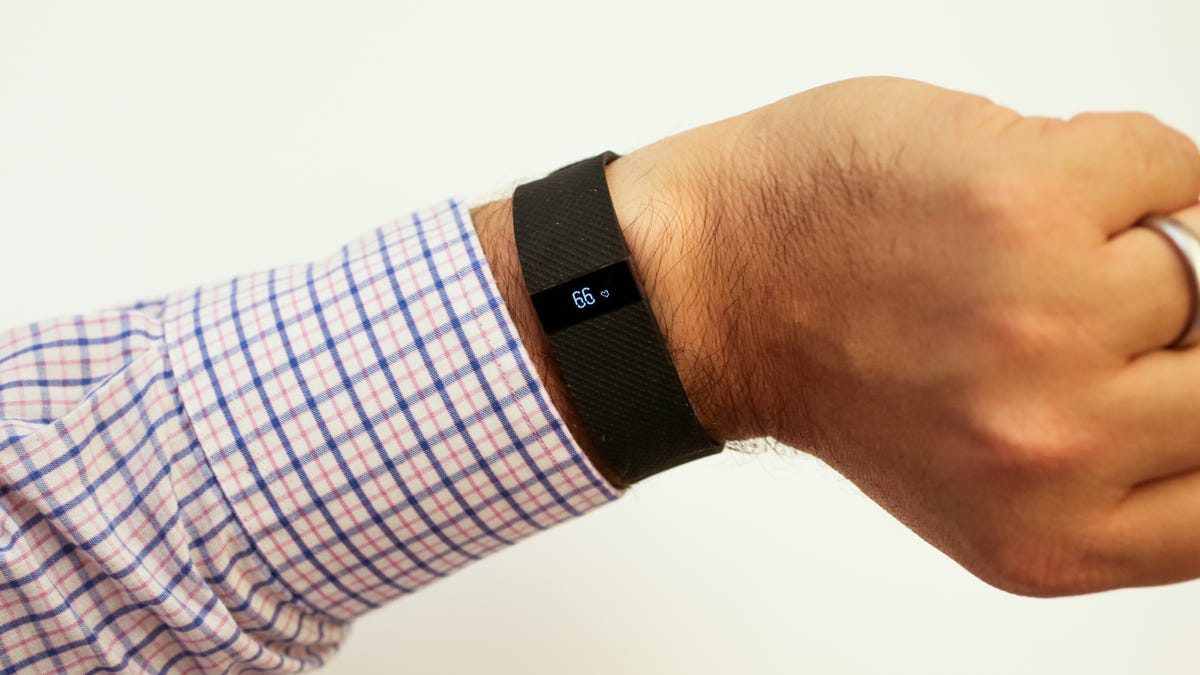

Sarah Tew/CNET
The PurePulse data can also be used to track estimated caloric burn for activities that don’t trigger the accelerometer, like stationary biking. The Charge HR can track activities including walking, running, biking, lifting weights, spinning, skiing and yoga, and reportedly with differing algorithms to maximize the accuracy of the burn estimate.
Of course, I didn’t get to actually try any of these activities while using the Charge HR in our office. It did seem to find my heart rate quickly, and once it acquired my heart rate it was accessible instantly whenever I switched back to check again.
Fitbit Surge: A pricier fitness smartwatch
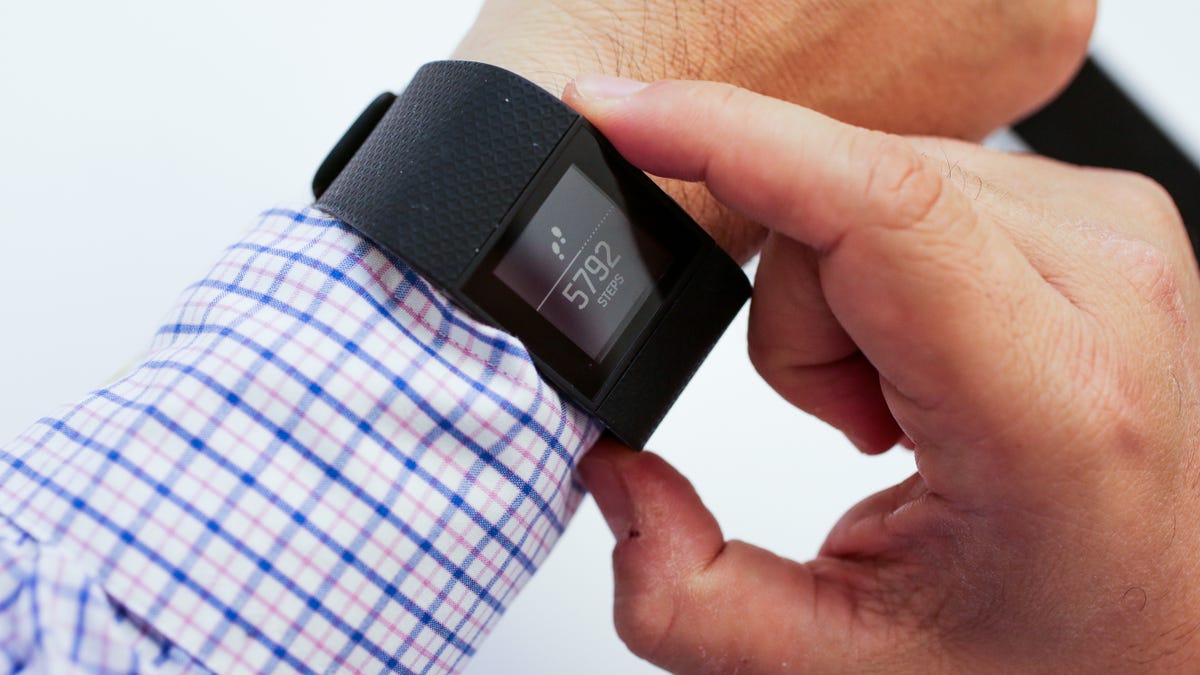

Sarah Tew
The biggest and most expensive Fitbit product of them all is the Fitbit Surge: a “fitness smartwatch,” it’s got a big capacitive-touch LCD display and side buttons, built-in GPS, and the ability to get caller ID and text messages from a connected phone. The Surge is water resistant, and like the Charge HR it continually tracks heart rate. It’s also coming in early 2015, and will cost $250 in the US, £200 in the UK, or $300 in Australia.
The Surge’s key advantages seem to be for runners: since it has its own GPS, like some running watches such as the Timex Ironman One GPS+ and Adidas MiCoach Smart Run (and the upcoming Sony Smartwatch 3 ), you could go for a jog and have it track your distance and where you’ve been.
The extra buttons and screen displays also help track exercise and workout sessions better on-screen. A music-remote function does basic play-pause-skip functions with whatever’s playing on your connected phone. The touch display’s fast, but side buttons operate mainly to start and stop workouts, not to switch between modes, which was a little confusing.
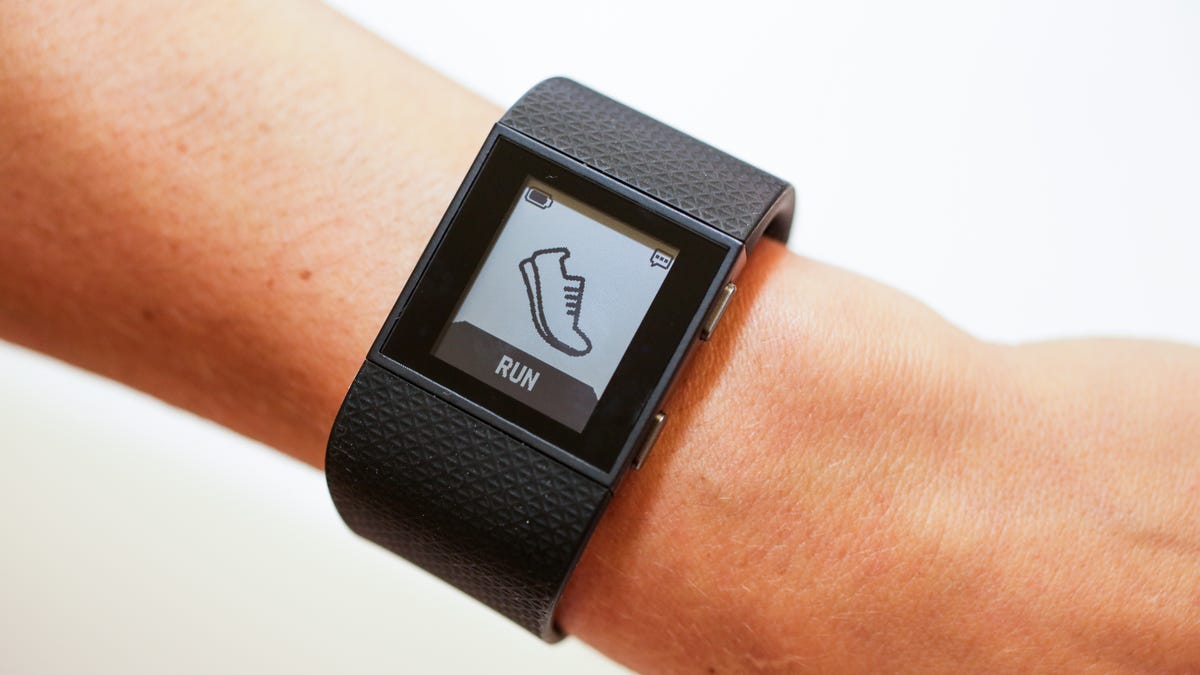

Sarah Tew/CNET
Like the Charge HR, the Surge lasts 5 days on a charge, or up to 5 hours while also using GPS. It’s also more sensor-studded: it has a three-axis accelerometer, GPS and optical heart-rate monitoring, plus a gyroscope and compass.
The Surge felt bulky on my wrist: the band is wide, and the wedge-like design made it feel bulkier than the Basis Peak , another similar fitness smartwatch.
The Peak, at $200, seems like the Fitbit Surge’s closest competition: like the Surge, the Peak has continuous heart-rate tracking and promises similar fitness-coaching functions. The Peak lacks GPS, but claims to be swim-friendly. And, it arrives in the US in November, while Fitbit’s Surge arrives next year in quite possibly the same launch window as the Apple Watch .
Adding heart-rate measurement to Fitbit’s health-tracking equation makes sense, but only if it’s done right and can help true fitness coaching. How it performs remains to be seen — optical heart-rate sensors don’t have a very good track record so far. But for most people, the Charge HR seems like it’ll be the best bet of the three.
How crowded the heart-rate accessory landscape will be by 2015 is another consideration, too. But Fitbit might have the best shot at making the most sense of it all to the most people, on the most compatible phones…if the bands can get here soon enough.



